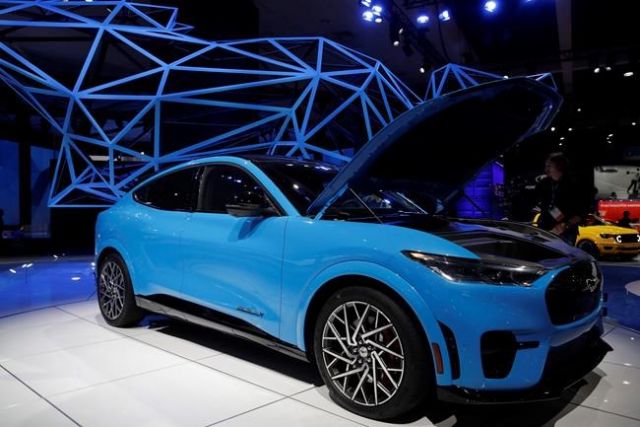
Profitability challenges limit growth of electric vehicle sales
Automakers are rolling out some big additions to the electric vehicle landscape this year as the market evolves, but it’s still not clear how much Canadians will be convinced to buy them.
Selection is certainly increasing. At the Canadian International AutoShow in Toronto that wraps up this weekend, automakers were showing off more than 40 hybrid and fully-electric plug-in vehicles, while McKinsey & Co. figures around 400 fully electric models will hit the market globally by 2025, including 113 this year alone.
But analysts say that government policies are crucial to actually push companies to sell those models, since automakers otherwise don’t have enough incentive to move away from internal combustion engine vehicles.
“I think the real, key problem for them,” said James Carter, principal consultant at Toronto-based Vision Mobility, “is really because they make so much money off ICE trucks, pickups, SUVs right now, that basically, the question that they’re having to ask themselves is ‘how the hell do we get off this drug?'”
He notes that some companies have been reluctant to move to electrification, while others such as Hyundai and Kia have rolled out popular models but are not producing enough to meet demand, because profitability is a challenge for electric vehicles.
Companies risk losing ground on new technologies if they don’t move fast enough, but also need to make enough profit to make billions of dollars of investment worthwhile, said Carter.
Ford Motor Co. is one of several companies that have made big promises about moving to electric. At the Toronto show they were showing off their all-electric Mustang Mach-E with a towering display and stadium seating for visitors to watch the SUV roll silently on stage. Despite the marketing, it’s still not clear how many will be available for Canadians when they roll out near the end of the year.
The company is hoping the SUV, with upwards of 500 kilometres of range, can win over buyers looking for more space but not willing to giving up performance.
“They don’t want to lose anything in terms of fun to drive, thrilling performance, acceleration, so we do see there is a real appeal to that consumer,” said Ford Canada president Dean Stoneley.
General Motors Co., meanwhile, plans to revive its Hummer brand this year with an electric model, as part of its commitment to move heavily into the space with “no-compromise” vehicles that provide the range and space consumers want, while pushing hard on achieving cost parity between electric and gas vehicles.
If companies can bring those costs down, and more charging infrastructure is built, Canadians seem to be interested in buying. Vision Mobility partnered on a poll of 1,200 Canadians that showed 56 per cent were either interested or very interested in full-electric vehicles, and 62 per cent on hybrids.
But demand is heavily influenced by policy. A recent EY report estimated that if all the incentives such as rebates, charging network investments, and emission regulations were removed, then plug-ins might see little market growth from the current roughly three per cent of sales by 2030, while policies could boost it to 30 per cent of new sales.
The International Energy Agency put out a similar estimate for Canadian plug-in sales by the end of the decade based on current policies, while noting that fewer initiatives in the U.S. means electric sales there will likely make up only eight per cent by 2030.


